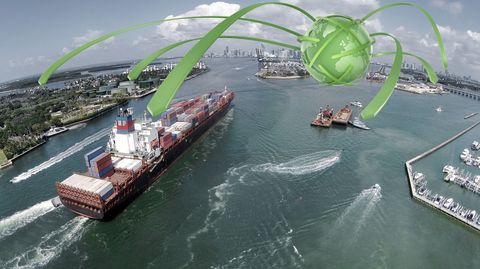As one of the most vocal proponents of the global free trade agenda, the European Union continues to make efforts to further liberalize its approach to international commerce, with the aim of making cross-border trade easier than ever before for its member states.
The latest step forward in this ongoing effort was recently confirmed with the announcement that the European Commission is to carry out an extensive overhaul of the current EU approach to charging value-added tax (VAT), with the aim of implementing a unified system that can be applied consistently across the entire European single market.
The change will represent the most significant reform of European VAT rules in around a quarter of a century, and is designed to help deliver a new paradigm that will be easier to use for businesses, governments and consumers, while also tackling the significant problem of fraud.
The background
VAT is seen as a major and growing source of revenue in the EU, raising more than €1 trillion in 2015 alone and contributing around seven percent of the economic bloc's total GDP. As a consumption tax, it is considered to be one of the most growth-friendly forms of taxation, but the European Commission has long argued that a better system is required.
At present, companies and consumers still face 28 different VAT regimes when operating cross-border, a state of affairs that was intended to be a transitional system, but has ended up persisting since 1993. Not only does this mean that VAT rules are one of the last areas of EU law not in line with the principles underpinning the single market, but it creates loopholes that result in annual VAT collections generally coming in around €150 billion below where they ought to be, while businesses trading cross-border currently suffer from 11 per cent higher compliance costs compared to those trading only domestically.
Of even greater concern is the fact that €50 billion is estimated to be lost due to international VAT fraud each year, money that ends up being diverted away from public budgets to be used to finance criminal organizations, including terrorism. According to the EU, these are the reasons why the current reforms are being initiated.
The basics
Under the new proposals, a definitive single EU VAT area will be created, with VAT to be charged on cross-border trade between businesses for the first time, while a "one-stop shop" online portal will be established for traders to make declarations and payments according to the same rules and administrative templates as in their home country. Member states will then pay the VAT to each other directly.
Additionally, a new and more consistent approach to calculating charges will be applied, whereby the final amount of VAT is always paid to the member state of the final consumer at the local rate, as is already in place for sales of e-services. Invoicing rules will also be simplified, allowing sellers to prepare invoices according to the rules of their own country even when trading between nations.
Finally, the EU will also be bringing in the concept of a Certified Taxable Person, a category of trusted business that will benefit from simpler rules and the accompanying time-saving benefits. In totality, these measures are expected to reduce the costs of trading across borders by €1 billion, while reducing VAT fraud by as much as 80 per cent.
Next steps
Having been outlined earlier this month, the new legislative proposal will be sent to the member states making up the European Council for agreement, with the European Parliament set to run a consultation on the reforms. Next year, a detailed legal proposal will be submitted by the European Commission to amend the current VAT Directive at a technical level, paving the way for a smooth implementation of the new regime.
In the meantime, four quick fixes have also been requested by member states to improve the day-to-day functioning of the current VAT system until the new system can be put in place, with these changes set to come into force by 2019. These short-term tweaks will simplify certain aspects of the VAT calculation and transaction processes, while making it easier for traders to prove that goods have been transported from one EU country to another.
Pierre Moscovici - European commissioner for economic and financial affairs, taxation and customs - said: "Today's proposal is expected to reduce cross-border VAT fraud by around 80 per cent; at the same time, it will make life easier for EU companies trading across borders, slashing red tape and simplifying VAT-related procedures. In short: good news for business, consumers and national budgets, bad news for fraudsters."






